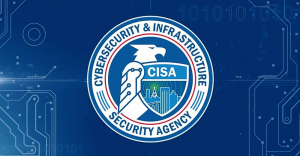As businesses continue to move online, it is essential to ensure the safety and security of sensitive information. One way to do this is by complying with the Payment Card Industry Data Security Standard (PCI DSS) requirements. The PCI DSS is a set of 12 requirements designed to ensure that businesses handling credit card data do so securely.
In this article, we will discuss each of the 12 requirements of the PCI DSS in detail, so that you can better understand what it takes to comply with this standard and protect your customers’ data.
Requirement 1: Install and maintain a firewall configuration to protect cardholder data
The first requirement of the PCI DSS is to install and maintain a firewall configuration to protect cardholder data. This means that you must have a firewall in place that is configured to restrict access to cardholder data.
Requirement 2: Do not use vendor-supplied defaults for system passwords and other security parameters
The second requirement of the PCI DSS is to not use vendor-supplied defaults for system passwords and other security parameters. This means that you must change default passwords and settings that are provided by your hardware and software vendors.
Requirement 3: Protect stored cardholder data
The third requirement of the PCI DSS is to protect stored cardholder data. This means that you must ensure that any stored cardholder data is encrypted and that access to it is restricted.
Requirement 4: Encrypt transmission of cardholder data across open, public networks
The fourth requirement of the PCI DSS is to encrypt transmission of cardholder data across open, public networks. This means that you must ensure that any data transmitted over a public network is encrypted and cannot be intercepted by unauthorized parties.
Requirement 5: Use and regularly update anti-virus software or programs
The fifth requirement of the PCI DSS is to use and regularly update anti-virus software or programs. This means that you must have anti-virus software in place that is regularly updated to protect against new threats.
Requirement 6: Develop and maintain secure systems and applications
The sixth requirement of the PCI DSS is to develop and maintain secure systems and applications. This means that you must ensure that any systems and applications used to handle cardholder data are secure and up to date.
Requirement 7: Restrict access to cardholder data by business need-to-know
The seventh requirement of the PCI DSS is to restrict access to cardholder data by business need-to-know. This means that you must ensure that only authorized personnel have access to cardholder data and that access is restricted to what is necessary to perform their job functions.
Requirement 8: Assign a unique ID to each person with computer access
The eighth requirement of the PCI DSS is to assign a unique ID to each person with computer access. This means that you must ensure that each individual with computer access has a unique identifier to enable you to track their activity.
Requirement 9: Restrict physical access to cardholder data
The ninth requirement of the PCI DSS is to restrict physical access to cardholder data. This means that you must ensure that any physical location where cardholder data is stored or processed is secure and that access is restricted to authorized personnel only.
Requirement 10: Regularly test security systems and processes.
This requirement emphasizes the importance of regularly testing security systems and processes to identify vulnerabilities and ensure that they are functioning as intended. To comply with this requirement, organizations should perform regular vulnerability scans and penetration testing to identify security vulnerabilities that could be exploited by attackers.
Regularly test security systems and processes.
This requirement emphasizes the importance of regularly testing security systems and processes to identify vulnerabilities and ensure that they are functioning as intended. To comply with this requirement, organizations should perform regular vulnerability scans and penetration testing to identify security vulnerabilities that could be exploited by attackers.
Vulnerability scanning is the process of using automated tools to scan networks, systems, and applications for known vulnerabilities. This can help organizations to identify vulnerabilities before they are exploited by attackers.
Penetration testing, on the other hand, involves simulating an attack on a network, system, or application to identify vulnerabilities that may not be detected through automated scanning. Penetration testing is typically performed by trained security professionals and can help organizations to identify potential security weaknesses and improve their overall security posture.
In addition to vulnerability scanning and penetration testing, organizations should also regularly review their security policies and procedures to ensure that they are up-to-date and effective. This can include reviewing access controls, authentication procedures, and other security controls to identify areas that may need improvement.
By regularly testing security systems and processes, organizations can identify vulnerabilities and weaknesses in their security defenses and take proactive measures to mitigate them. This can help to reduce the risk of data breaches and other security incidents, and demonstrate a commitment to information security and compliance with the PCI DSS standard.
Requirement 12: Maintain a policy that addresses information security for all personnel.
This requirement focuses on the importance of having a comprehensive security policy in place that addresses information security for all personnel, including employees, contractors, and third-party vendors. The policy should outline security procedures, responsibilities, and expectations for all individuals who have access to cardholder data.
To comply with this requirement, organizations should create a security policy that clearly defines the roles and responsibilities of personnel with respect to information security. The policy should also outline the procedures for reporting security incidents, the consequences of violating security policies, and the measures in place to monitor compliance.
In addition, organizations should provide regular security training and awareness programs to all personnel to ensure that they are aware of their roles and responsibilities in maintaining the security of cardholder data. This can help to ensure that all personnel understand the importance of information security and are equipped with the knowledge and skills necessary to protect cardholder data.
By implementing a comprehensive security policy and providing regular security training and awareness programs, organizations can demonstrate their commitment to information security and reduce the risk of data breaches and security incidents.
Overall, compliance with the PCI DSS standard requires organizations to implement a range of security measures and practices to protect cardholder data. By complying with these requirements, organizations can reduce the risk of data breaches and other security incidents, and maintain the trust of their customers and partners.




Absolutely composed subject material, regards for selective information.